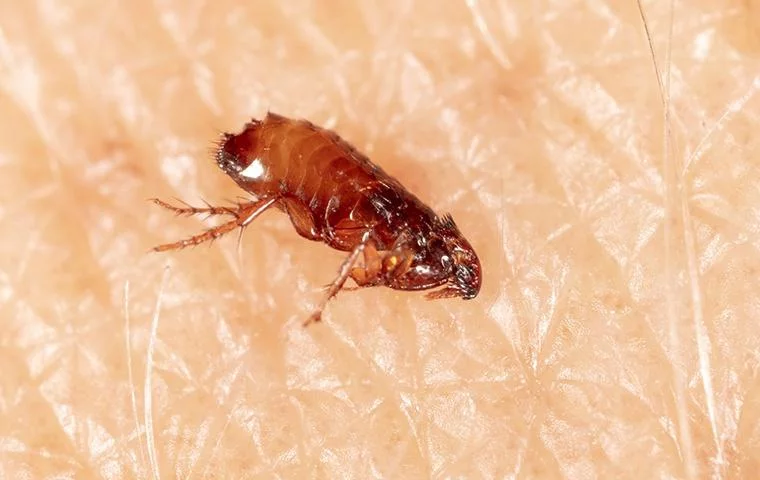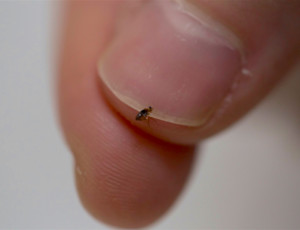Flea Treatments in Florida:
Exterminator Services for Bradenton, Parrish, and Palmetto
Florida’s subtropical climate offers continuous warmth, gentle winters, and frequent outdoor activities that draw residents and visitors alike. Unfortunately, these inviting conditions also set the stage for persistent pests, including fleas. When fleas infiltrate a home or business, they can create endless irritation for both animals and people, leaving itchy bites and possibly transmitting illnesses or parasites. Whether you reside in a bustling neighborhood of Bradenton, manage an up-and-coming property in Parrish, or run a pet-friendly venue in Palmetto, proper flea treatments are crucial to preserving comfort, cleanliness, and overall well-being. Below, you will find detailed information on how fleas flourish in Florida, the red flags that signify a potential infestation, and how an experienced exterminator can solve your flea problems efficiently.
Why Fleas Thrive in Florida

- Consistent Warm Temperatures
In cooler climates, harsh winters drive down flea populations or eliminate them altogether until temperatures rise. In Florida, cold snaps rarely last long, so fleas and their eggs encounter few seasonal barriers. With stable indoor temperatures and moderate outdoor conditions, fleas remain active and reproduce nearly all year. - High Humidity and Rainfall
Fleas often develop faster in moist environments, as their larvae and pupae stages require water vapor to avoid desiccation. Florida’s frequent rainfall and naturally humid air support these life stages, especially in shady yards or damp corners of properties. - Abundant Hosts (Wildlife and Pets)
Fleas are blood-feeding parasites that easily move between wild animals (like raccoons, stray cats, or rodents) and household pets (dogs, cats). In southwestern Florida, robust wildlife populations and a high rate of pet ownership mean fleas find numerous hosts. If a pet roams a shared outdoor space, they might pick up fleas and bring them inside—allowing eggs and larvae to spread indoors. - Minimal Seasonal Dormancy
In colder states, fleas slow or halt reproduction during the lengthy chill. In Florida, mild dips in temperature rarely trigger true dormancy. Flea populations can cycle continuously, raising the stakes for property owners who must remain vigilant instead of relying on winter to reset flea numbers. - Frequent Human and Pet Traffic
Bradenton, Parrish, and Palmetto experience continuous population shifts, tourism, and visitors. Animals or people traveling between different locales occasionally bring fleas hidden in clothing, luggage, or personal belongings. Secondhand furniture or communal pet areas like dog parks offer additional opportunities for fleas to relocate.
Signs of a Flea Infestation
- Excessive Pet Scratching
One of the earliest indicators is a cat or dog scratching or biting at their fur more than usual, focusing on certain spots like the neck, rear, or belly. Fleas biting cause constant irritation, and pets with flea allergies may show hair loss or red sores from self-trauma. - Visible Fleas on Fur or Bedding
Adult fleas measure about one to three millimeters, often dark-brown or reddish, and leap when disturbed. Brushing a pet’s fur with a fine-toothed flea comb can sometimes reveal tiny fleas or black “flea dirt”—droppings that turn reddish when moistened on tissue. - Flea Dirt and Larvae in Carpets or Cracks
Flea droppings (flea dirt) can appear in areas where pets rest—like bedding, couches, or near floor corners. You may also spot minuscule, worm-like larvae (off-white in color) in warm, shady spots if the infestation grows. Vacuuming thoroughly and discarding bags can collect them. - Human Bites on Ankles
Fleas will bite humans if no other hosts are handy, typically around ankles or lower legs. These small red welts may appear in clusters or lines, leading to itching or mild swelling. - Pet Restlessness
Dogs or cats dealing with fleas often act more agitated than usual, losing sleep or showing irritability. Multiple fleas biting at night significantly disrupts animals’ rest, which in turn stresses owners noticing their companions’ distress.
Why Quick Flea Treatments Matter
- Health and Comfort
Beyond causing itching, fleas can transmit tapeworms or, in rare cases, more serious infections. Heavy infestations lead to anemia in smaller animals. Eliminating fleas promptly lowers these medical risks for both pets and humans. - Rapid Reproduction
Female fleas can lay dozens of eggs per day, which drop off hosts into carpets, cracks, or yard debris. Eggs hatch into larvae and then pupae, ultimately re-emerging as more adult fleas. If the cycle continues unchecked, property-wide infestations arise quickly. - Anxiety and Stress
Enduring flea bites disrupts daily life, as people worry about being bitten or dealing with fleas on clothing. Ongoing infestations may spur frustration, especially if do-it-yourself measures fail to achieve meaningful relief.
Pet Distress
Fleas torment pets, forcing them to scratch furiously and risk secondary skin infections from raw scratching. Additionally, veterinarian bills surge if fleas give rise to more severe complications like flea bite dermatitis or internal parasites.

Effective Exterminator Approaches
- Inspection and Assessment
A professional flea exterminator initially examines both the interior and exterior of a property, assessing yard conditions (like shaded damp corners, leaf litter) and indoor zones (carpets, furniture crevices, pet bedding). Identifying flea hot spots allows for targeted, efficient treatments. - Indoor Treatment
- Vacuuming: Proper vacuuming extracts adult fleas, eggs, larvae, and droppings from carpets or upholstery. Immediately discarding the vacuum bag (sealed in plastic) outside curtails their ability to re-infest.
- Residual Sprays: Pest control experts apply insect growth regulators or adulticides along baseboards, cracks, and carpets to affect fleas at all life stages. Pets and occupants often need to vacate briefly, depending on product instructions.
- Steam Cleaning: High-heat steam kills fleas and eggs on contact, especially in fabric or rugs. This method complements chemical use where needed.
- Outdoor Yard Solutions
- Landscaping Adjustments: Mowing grass short, trimming dense shrubs, and removing leaf piles minimize shady, moist hideouts fleas favor.
- Chemical Applications: Professionals may apply larvicides to yard edges, under decks, or near fences where pets roam or wildlife passes. By interrupting flea development outdoors, re-infestation is less likely.
- Pet Health Coordination
Exterminators handle the environment, but pet treatments remain equally important. Owners must consult veterinarians for suitable flea preventatives—like topicals, pills, or flea collars. Regular grooming and checking for fleas near the ears, neck, or belly helps early detection. - Follow-Up Visits
Because fleas progress through egg, larva, pupa, and adult stages, new pupae may hatch after initial treatments. Arranging a re-check ensures that newly emerged adult fleas are neutralized before reproduction resumes.
Service Areas: Bradenton, Parrish, and Palmetto
Bradenton: Situated along the Manatee River, Bradenton boasts scenic waterfront living and lively commercial areas. These features also host wildlife that might deposit fleas in yards or near trash bins, enabling infiltration of nearby homes or businesses. Quick detection and consistent yard upkeep limit roving flea populations.
Parrish: A fast-developing community featuring suburban enclaves and farmland, Parrish’s growing neighborhoods can experience fleas carried by local wildlife or pets exploring open spaces. Lawn management, plus professional flea treatments, keep emerging infestations from escalating.
Palmetto: This Florida Gulf Coast gem combines old Florida charm with modern living. Coastal areas see a steady flow of visitors—sometimes with pets—that can track fleas inside. Thorough property checks and flea control measures maintain a restful environment for locals and guests alike.
Why Choose Our Flea Treatments
- Local Insight
Year-round mild weather in southwestern Florida suits fleas at every life stage. Our solutions factor in these conditions, ensuring we combat fleas indoors and outdoors to cover every potential source or host site effectively. - Targeted Methods
We identify flea hot spots—like areas where pets rest—and concentrate insect growth regulators, adulticides, or steam cleaning on those zones. Rather than blanket spraying, we optimize product usage for maximum impact and occupant safety. - Focus on Safety
Deploying insecticides or other chemicals responsibly helps safeguard family members, pets, and beneficial organisms. By applying treatments to essential areas—carpets, yard boundaries, or furniture seams—we reduce unwarranted exposure while eliminating fleas. - Collaboration with Pet Owners
Even the best environmental treatments fail if animals remain untreated. Advising owners on veterinarian-backed flea preventatives ensures fleas that jump on pets post-treatment do not survive long enough to spawn another outbreak. - Long-Term Prevention
Beyond the immediate crisis, we advise property owners on yard upkeep, housekeeping, and routine checks so that fleas have fewer chances to return. This integrated approach merges professional insight with occupant diligence, creating a protective barrier.
- Local Insight

Next Steps
Have you noticed pets scratching relentlessly, discovered bites on your ankles, or spotted tiny black specks in pet bedding? Contact us to learn more or schedule your service. Our flea exterminator methods target fleas at all stages—from eggs lurking in carpets to adult fleas hopping on pets—giving you freedom from itching and stress. By thoroughly eliminating existing fleas and limiting breeding grounds, we restore comfort to your Bradenton, Parrish, or Palmetto property.
Sustaining a Flea-Free Environment
Once fleas are eliminated, regular efforts keep them at bay. Consider these best practices:
- Frequent Vacuuming: Sucking up any newly laid eggs or stray fleas halts re-colonization. Dispose of vacuum contents in sealed bags outside the home.
- Wash Pet Bedding: Launder bedding on hot cycles to kill hidden fleas or eggs. Clean pet crates or carriers, too, if used frequently.
- Trim Lawns and Clear Debris: Overgrown grass or leaf piles remain damp, letting flea larvae mature outdoors. Mowing and removing yard clutter hamper such breeding areas.
- Pet Preventatives: Work with veterinarians to maintain monthly flea treatments for dogs or cats. If pets wander outside or interact with other animals, consistent medication drastically lowers reinfestation odds.
- Inspect Secondhand Goods: Fleas can hide in used sofas, rugs, or other soft furnishings. Quick checks or vacuuming these items help ensure no pests catch a ride inside.
In southwestern Florida’s climate, fleas remain a possibility year-round. By combining prudent housekeeping, vigilant pet care, and timely professional flea treatments, you can experience fewer insect concerns and enjoy all that Bradenton, Parrish, and Palmetto have to offer—stress-free. Thorough attention to detail and a commitment to your property’s upkeep ensure you do not let fleas gain a stronghold again.
